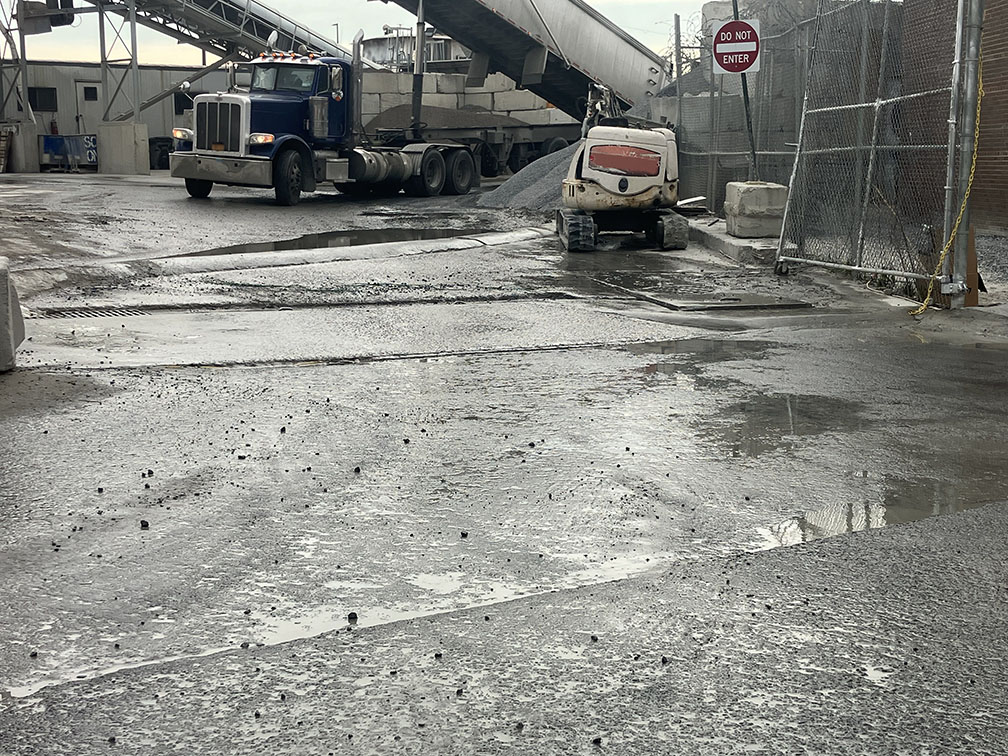Your Guide to Stormwater Management and General Permits, Part 2
The National Pollutant Discharge Elimination System (NPDES) permit program was created over 50 years ago to regulate stormwater runoff. The overarching goal of this program is to prevent dangerous contaminants and water pollution from damaging the environment and public health. Visit Part 1 of this series for background on stormwater and runoff, and continue below to learn about stormwater permitting.
What type of permit does your facility need?
Although states must, at a minimum, follow the NPDES permit program’s requirements, many have opted to strengthen and expand their permitting programs. One of these states is New York, which has a State Pollutant Discharge Elimination System (SPDES) permit program.
Whether your state follows the federal standards or a more enhanced standard, the program’s goal is to regulate what the United States Environmental Protection Agency (EPA) calls “point sources.”
What is a point source?
Point sources, according to the EPA, are sources from which a pollutant is obviously discharged, like a ditch or pipe. Point sources can often be found in a variety of settings, including municipal separate storm sewer systems (MS4s), construction sites, and industrial facilities. Even if you think your facility is not subject to stormwater permitting, it is a good idea to become familiar with the requirements so you are prepared if conditions change or you have an accidental discharge.
How does permitting work?
The NPDES stormwater permit program addresses the following activities:
- Stormwater discharges from Construction Activities
- Stormwater discharges from Industrial Activities
- Stormwater discharges from Municipal Activities
- Stormwater discharges from Transportation Sources
- Oil and Gas Stormwater Permitting
- Stormwater Maintenance
- Long-Term Stormwater Planning
The federal Clean Water Act requires organizations to take steps to control stormwater pollution from entering water systems, which is done by issuing various types of permits. Whether or not your facility needs a permit and what type of permit applies depends on how waste and water are managed at your facility. If your facility exposes pollutants to stormwater and directly or indirectly discharges into any local waterway, you will need coverage under a permit. You should always check with a knowledgeable party to make sure your facility follows current regulatory conditions.
As stated above, each state has the option of enforcing more stringent requirements and, therefore, may have different permits and permitting processes in place. For example, although New York has the SPDES program, nearby Connecticut and Massachusetts follow the federal standards.
Additionally, Publicly Owned Treatment Works (POTWs) have discharge limits that are specific to their treatment systems and may vary by municipality, making it important to check with state and local authorities to verify the steps you need to take to be in compliance.
In either case, the permit will detail what can or cannot be discharged into water, how permit holders must monitor and report on their activities, and other measures to ensure that water is protected, such as through periodic water sampling.
Walden will post another blog in this series that covers other important aspects of the stormwater permitting process. Keep an eye out for that, and feel free to contact our stormwater experts at 516-980-5508 or download our complete stormwater guide for more information!

Contact Walden at 516-980-5508 to speak with an experienced consultant about your stormwater permitting needs. Download our complete stormwater guide for additional information.

